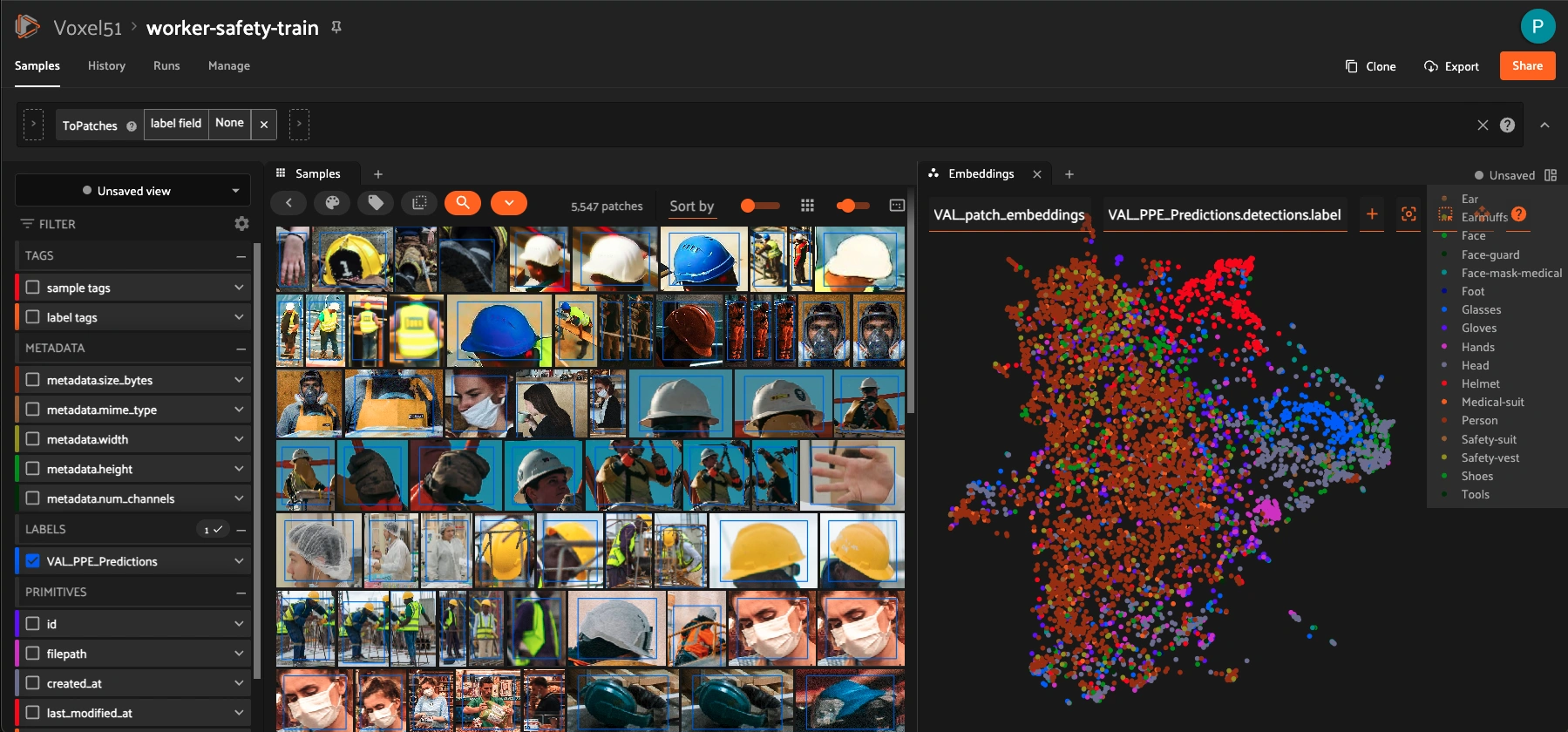 Run in Google Colab Run in Google Colab
|
 View source on GitHub View source on GitHub
|
|
Exploring Verified Auto Labeling#
Welcome to this hands-on workshop where we will learn how to load and explore datasets using FiftyOne. This notebook will guide you through programmatic interaction via the FiftyOne SDK and visualization using the FiftyOne App.

Learning Objectives:#
Load datasets into FiftyOne from different sources.
Understand the structure and metadata of datasets.
Calculate patches and gain insights using embeddings.
Understand what VAL - Verified Auto Labeling means and bring this to the analysis.
In this example, we use dataset loading from directory and a Kaggle dataset.
Download, extract and add the dataset in the root folder of this repo. I have called it “ppe”
[ ]:
import fiftyone as fo
import shutil
import os
dataset_dir = "ppe"
import fiftyone as fo
import fiftyone as fo
name = "sh17-dataset_FO_patches"
data_path = "ppe/images"
labels_path = "ppe/labels"
classes = [
"Person", # 0
"Ear", # 1
"Earmuffs", # 2
"Face", # 3
"Face-guard", # 4
"Face-mask-medical", # 5
"Foot", # 6
"Tools", # 7
"Glasses", # 8
"Gloves", # 9
"Helmet", # 10
"Hands", # 11
"Head", # 12
"Medical-suit", # 13
"Shoes", # 14
"Safety-suit", # 15
"Safety-vest" # 16
]
# Import dataset by explicitly providing paths to the source media and labels
dataset = fo.Dataset.from_dir(
dataset_type=fo.types.YOLOv4Dataset,
data_path=data_path,
labels_path=labels_path,
classes=classes,
name=name,
)
[ ]:
session = fo.launch_app(dataset, auto=False, port= 5152)
Calculate the embeddings of patches and visualize it#
Once you have the dataset in YOLO format FiftyOne will convert the dataset in FiftyOne format and you can calculate the embeddings selecting a model from the Build-In options que have in the FiftyOne Model Zoo. You can select multiple from multiple options, like CLIP, DINOv2, DINOv3, MobileNet, etc.
[ ]:
import fiftyone.zoo as foz
# Specify the field containing the patches (e.g., detections)
patches_field = "ground_truth"
# Option 1: Use a pre-trained model from the FiftyOne Model Zoo
model = foz.load_zoo_model("mobilenet-v2-imagenet-torch")
# Compute embeddings for the patches using the specified model
dataset.compute_patch_embeddings(
patches_field=patches_field,
model=model,
embeddings_field="patches_embedding",
num_workers=0
)
[ ]:
import fiftyone.brain as fob
fob.compute_visualization(
dataset,
patches_field=patches_field, # your field
embeddings="patches_embedding", # patch embedding field
brain_key="dectection_patch_embeddings",# name for this embedding run
num_workers=0
)
[ ]:
dataset.persistent=True
[ ]:
print(dataset)
Unlock VAL with FiftyOne Enterprise#
Experience the power of VAL (Visual Auto Labeling) with FiftyOne Enterprise!
Check the latest blog about VAL BLOG VAL to see VAL in action.
Want to learn more or get access? Book a personalized demo with our Customer Success Team—they’re excited to show you how VAL can accelerate your workflows.
Ready to try FiftyOne? Explore datasets in the cloud.
[ ]:
# Open in App (tabs)
session = fo.launch_app(dataset, port=5151, auto=False)